An SEO audit template is essentially a comprehensive checklist that encapsulates all the crucial points of SEO practices, which can be used to assess and improve the overall performance of your website.
The template comprises various parameters and factors that are integral to optimizing a website for search engines, such as metadata, content quality, keyword research, backlinks, site architecture, and more.
By using a well-designed SEO audit template, you can easily identify the areas where your website needs improvement, create a roadmap for SEO optimization, and make data-driven decisions to enhance your website’s search engine visibility and traffic.
Let us discuss some useful tips and tricks for SEO Audit Templates.

Page Contents:
Technical SEO Audit Template Tips
Technical SEO is the backbone of any website. technical SEO deals with all the parameters related to the site structure and security. The following is the list of parameters that should be included in the Technical SEO Audit Template.
1. Website structure and architecture
When creating a technical SEO template, it’s important to keep in mind that the first parameter should be the website’s structure and architecture. This includes factors such as the organization of pages, the hierarchy of content, the layout of the website, and the use of navigation menus and internal linking.
By ensuring that the website is well-structured and easy to navigate, you can help search engines crawl and index your pages more effectively, which can improve your visibility and ranking in search results.
2. Speed and performance
it is essential to consider the speed and performance parameters for a website’s Technical SEO Audit Template. The loading time of a website can significantly impact its search engine ranking and user experience.
Therefore, it is crucial to assess factors such as page load speed, server response time, and website performance optimization to ensure that the website runs efficiently.
Mobile responsiveness is also an essential aspect of website performance that should be evaluated during an SEO audit. By analyzing these factors, you can identify areas for improvement and optimize the website for better search engine ranking and user experience.
3. Mobile-friendliness
In today’s digital age, almost every individual owns a mobile phone, making it more crucial for businesses and website designers to prioritize the development of mobile-friendly websites.
Having a mobile-friendly website has become a necessity to ensure that users have a seamless browsing experience across different devices.

For this reason, the technical SEO audit template must include mobile-friendliness as one of the foremost parameters to be evaluated. By doing so, website owners can ensure that their website is accessible and optimized for all users, regardless of the device they use to access it.
4. URL structure
One of the most common technical SEO mistakes is having a bulky URL. To optimize your website for search engines, it is essential to have a simple URL structure that is easy to crawl.
URL structure is a crucial parameter for the Technical SEO Audit Template as it helps search engines understand the content of your website better. A well-structured URL makes it easier for search engines to crawl and index your website’s pages, resulting in higher visibility and better rankings.
Therefore, it is highly recommended to pay attention to your website’s URL structure and ensure that it is optimized for search engines.
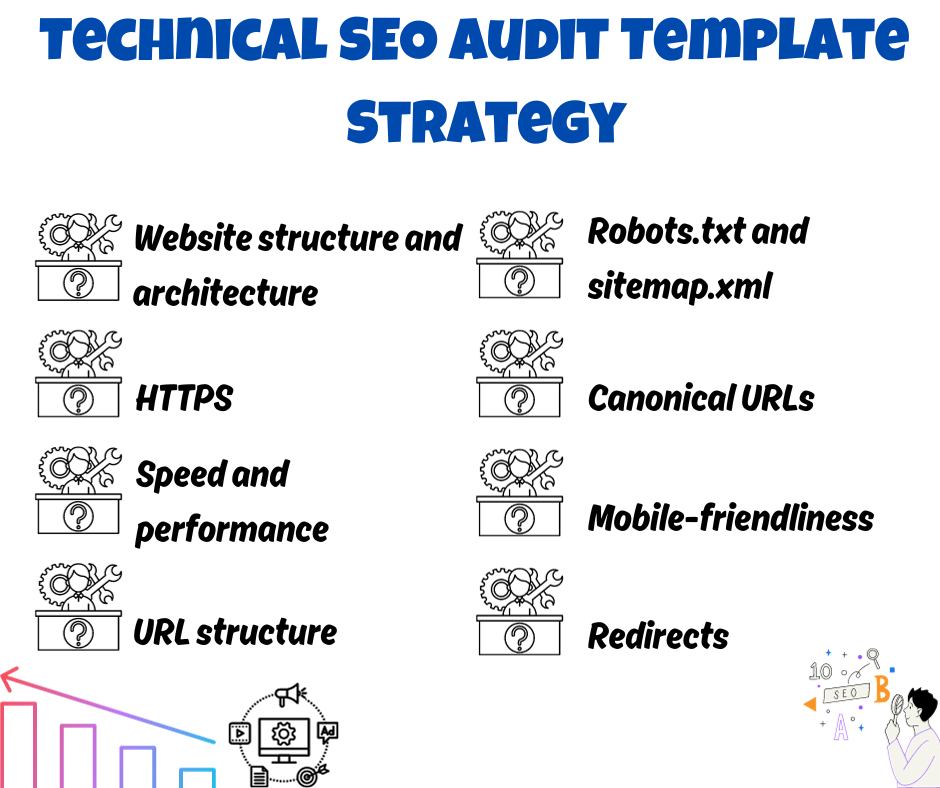
5. Robots.txt and sitemap.xml
When conducting a technical SEO audit, it is crucial to include certain parameters to ensure a website is optimized for search engines. One of these parameters is the inclusion of a robots.txt file and a sitemap.xml file.
The robots.txt file instructs search engine crawlers which pages and directories of a website should not be crawled or indexed, while the sitemap.xml file provides a roadmap of a website’s pages and content that should be crawled and indexed.
By including these files in the technical SEO audit template, website owners can ensure their website is easily discoverable and indexed by search engines, leading to increased visibility and traffic.
6. Canonical URLs
A Canonical URL parameter of a technical SEO audit template helps website owners and SEO professionals verify if their website’s canonical URLs are properly set up.
By properly setting up canonical URLs, duplicate content issues can be avoided, which in turn can improve a website’s search engine ranking.
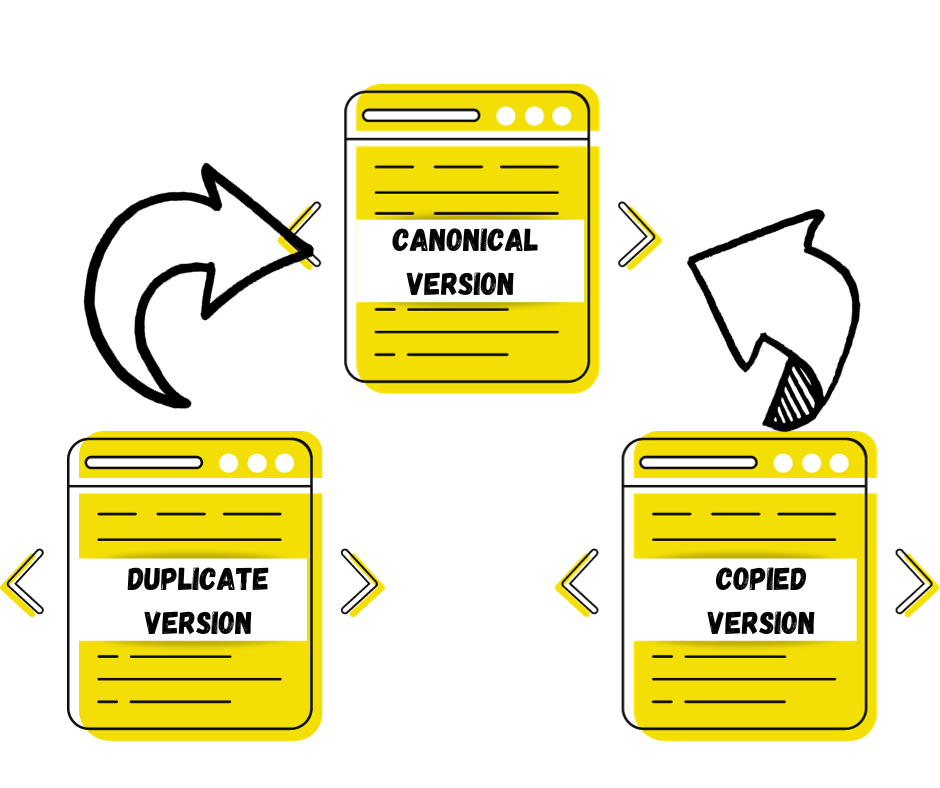
The template contains a set of guidelines and best practices for checking canonical URLs, including identifying and resolving any issues related to incorrect or missing canonical tags.
This can help ensure that a website’s content is properly indexed by search engines and that users are directed to the correct version of a page.
7. Redirects
The redirects parameter is an important aspect of technical SEO audit that needs to be carefully evaluated. It refers to the process of redirecting users and search engines from one URL to another. This could be due to various reasons such as changes in website structure, pages being deleted, or moving to a new location.
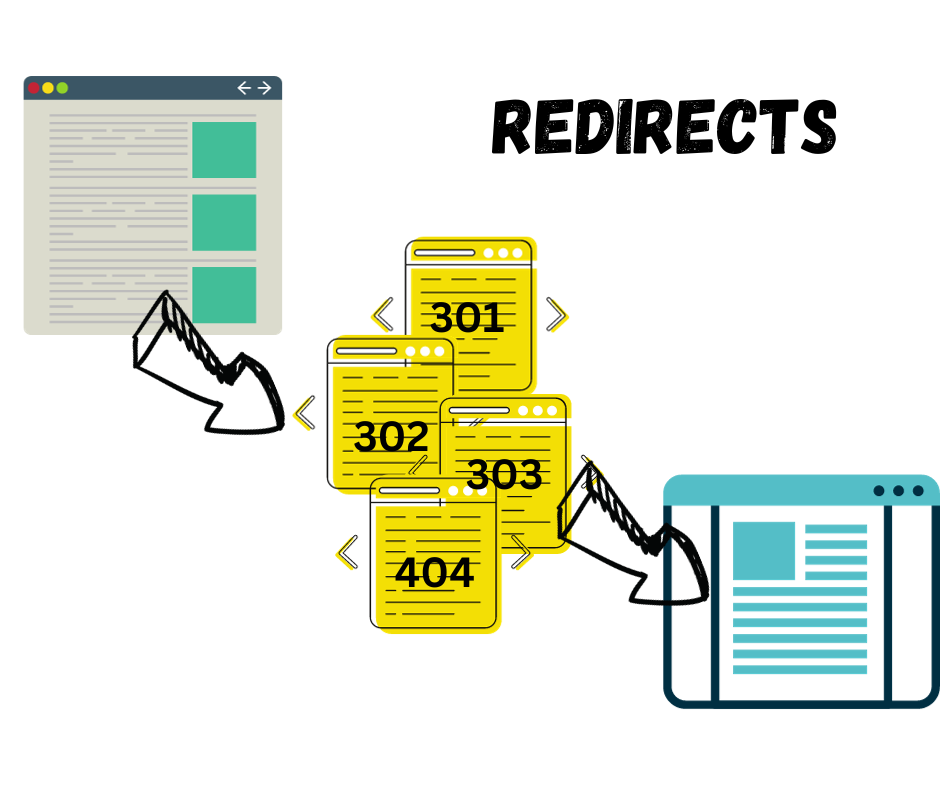
If redirects are not properly implemented, it can result in broken links, 404 errors, and poor user experience, which in turn can negatively impact your website’s search engine rankings. Therefore, it is imperative to ensure that all redirects are properly set up and maintained to avoid any issues.
8. HTTPS
When it comes to technical SEO audits, the HTTPS parameter plays a crucial role in ensuring a website’s security and overall performance. HTTPS, or Hypertext Transfer Protocol Secure, is an encryption protocol that encrypts the data transfer between the website and the user’s browser.

This encryption helps to protect sensitive information, such as login credentials or credit card details, from being intercepted by hackers or third-party entities.
Moreover, Google considers HTTPS as a ranking factor and rewards websites that use it with higher search engine rankings. Therefore, it’s essential to check for HTTPS implementation and configuration as part of a comprehensive technical SEO audit.
On-Page SEO Audit Template Tips
On-page SEO is the most important for your search engine rankings. Your page layout matters not only for the search engines but also for readers’ and customers’ engagements. Let us now talk about On-page SEO audit template tips.
1. Keyword research and analysis
The first step towards effective on-page SEO is conducting keyword research and analysis. This involves identifying the keywords and phrases that are relevant to your business and industry and analyzing their search volume, competition level, and other factors that can impact their effectiveness as optimization targets.
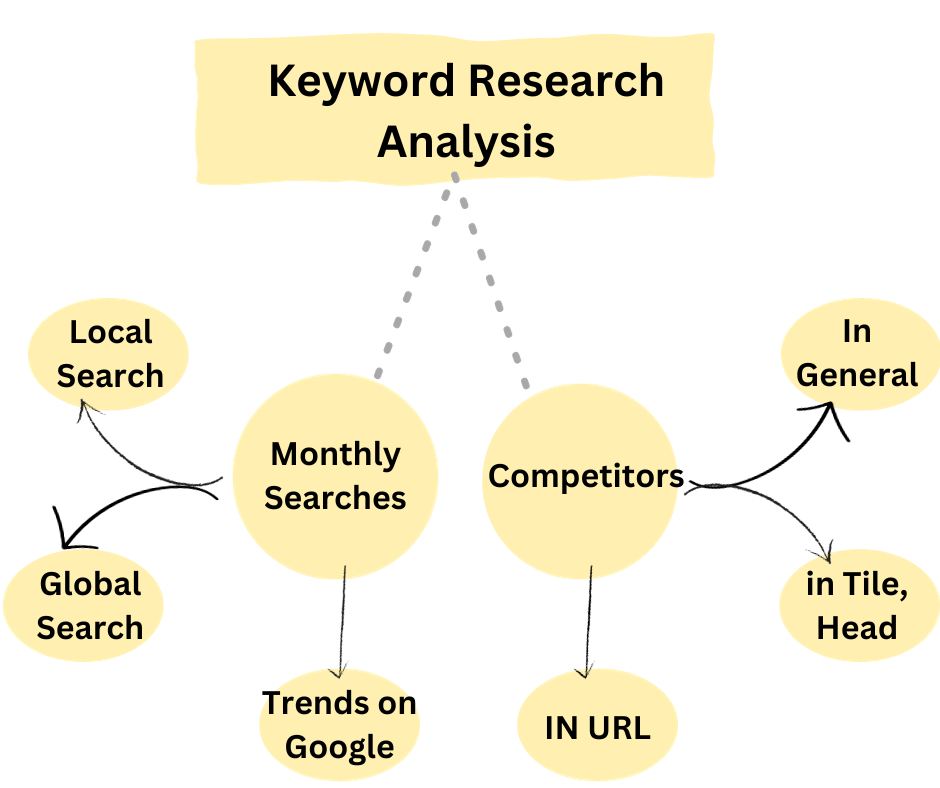
By doing this, you can gain insights into the topics and themes that are most important to your target audience, and use them to inform your content creation and optimization efforts. That’s why keyword research and analysis should be an essential component of any On-page SEO audit template.
2. Title tags and meta descriptions
Title tags and meta descriptions are crucial components of an on-page SEO audit template. These elements play a significant role in optimizing web pages for search engines. A title tag is an HTML element that indicates the title of a webpage.
It appears in the search engine results pages (SERP) and the browser’s title bar when users visit a website. On the other hand, meta descriptions are summaries of web pages that appear below the title tag in SERP.
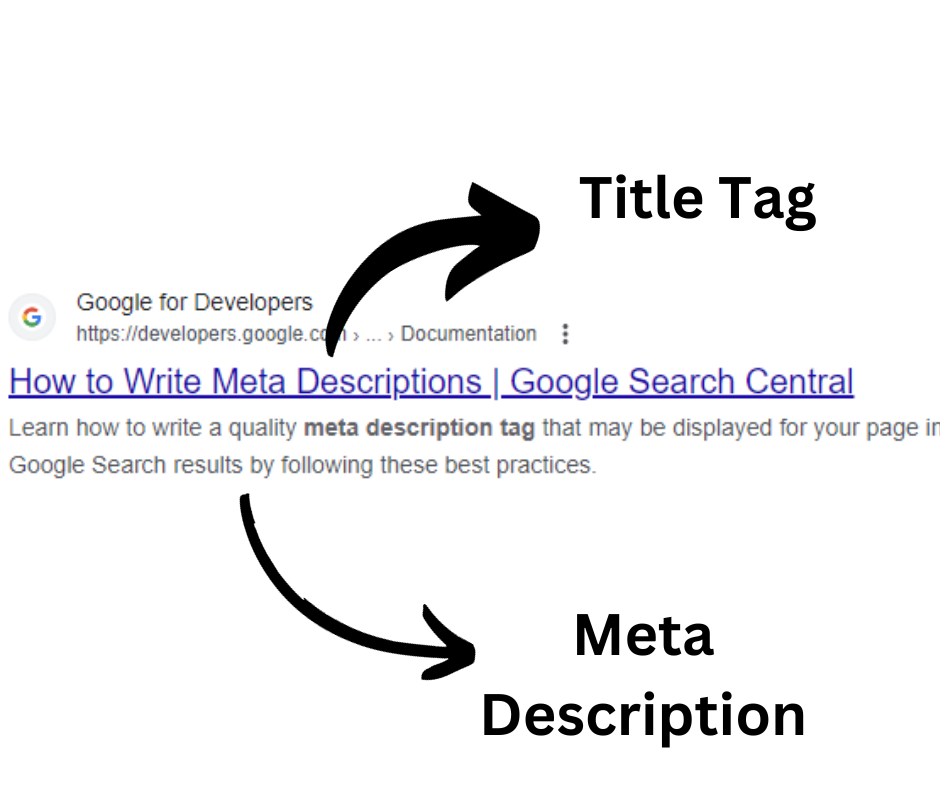
They provide a brief overview of the content of a web page and help users decide whether to click and visit the page. Properly crafted title tags and meta descriptions can help improve click-through rates, enhance user experience, and boost search engine rankings.
3. Headings and subheadings
When conducting an On-page SEO audit, one of the key parameters is the proper use of headings and subheadings. Headings and subheadings serve as a way to structure the content on a webpage and help search engines understand the hierarchy and context of the information presented.
Properly using headings and subheadings can improve the user experience by making it easier to scan and digest information, as well as providing a clear and concise roadmap of the content.
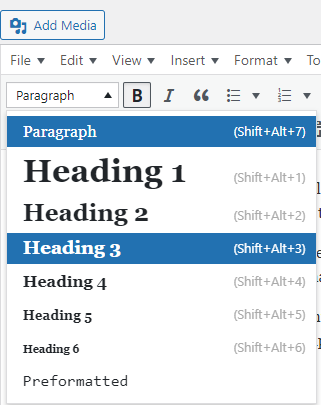
It is essential to ensure that headings and subheadings are used in a logical order, are relevant to the content, and contain targeted keywords to maximize their potential impact on search engine rankings.
4. Content quality and relevance
One of the crucial parameters to evaluate during an on-page SEO audit is the quality and relevance of the content. The content quality refers to how well-written, informative, and engaging the content is for the target audience.
On the other hand, relevance refers to how closely the content aligns with the user’s search intent and the keywords they use.
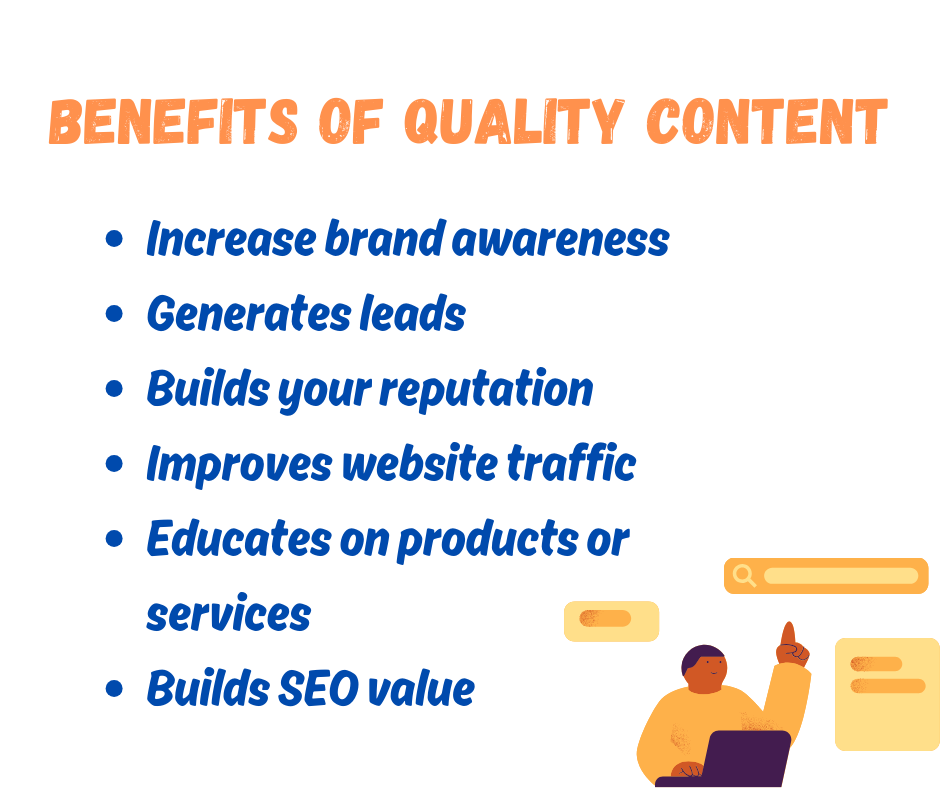
A well-optimized website should have high-quality, relevant content that helps it rank higher in search engine results pages (SERPs) and attract more organic traffic. Therefore, it’s essential to prioritize content quality and relevance while conducting an on-page SEO audit.
5. Internal linking
One of the important parameters that need to be included in an on-page SEO audit template is internal linking. This refers to the practice of linking to pages within your website.
Internal linking can help to improve the navigation of your site, provide additional information to users, and also help search engines understand the structure of your site.
It can also help to distribute link equity and boost the ranking of your pages in search engine results pages (SERPs). Therefore, it is important to make sure that your internal linking strategy is optimized for both users and search engines.
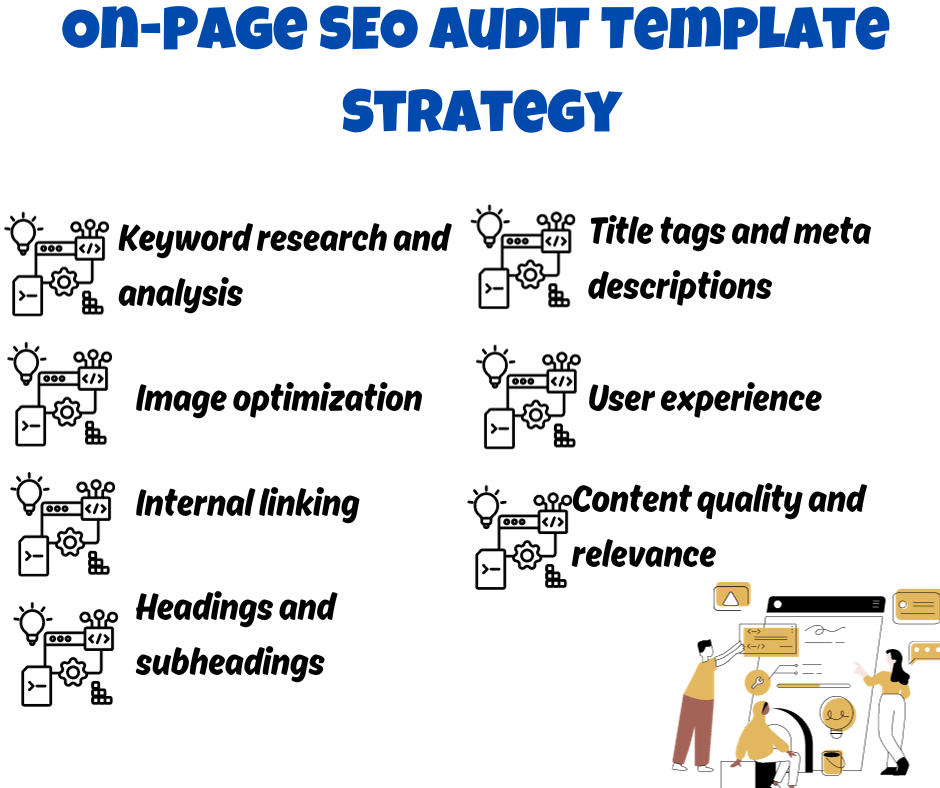
6. Image optimization
One of the crucial factors to consider during an on-page SEO audit is image optimization. It is a process of reducing the size of images without compromising their quality, which in turn helps in improving website loading speed, user experience, and search engine rankings.
Image optimization involves several techniques, such as compressing images, reducing file size, and choosing the appropriate file format.
By including image optimization in your on-page SEO audit template, you can ensure that your website is optimized for search engines, leading to higher traffic and better engagement with your target audience.
7. User experience
One of the key parameters to consider during an on-page SEO audit is the user experience. The user experience refers to the overall experience that a user has while navigating through a website. It is a critical factor that can impact a website’s search engine ranking.
A well-designed website that provides a smooth and seamless user experience can result in higher engagement, longer visit durations, and lower bounce rates.
On the other hand, a poorly designed website that is challenging to navigate may result in a high bounce rate and a lower search engine ranking. Therefore, optimizing the user experience should be a priority during any on-page SEO audit.
Off-Page SEO Audit templates tips
For a website to be considered trustworthy, it is important to conduct an off-page SEO audit and follow some tips. Here are a few tips to get you started:
1. Backlink profile analysis
One of the most significant factors in conducting an off-page SEO audit for a website is analyzing its backlink profile. This involves examining the links that are directed towards the site from other domains, as well as assessing the quality, quantity, and relevance of those links.
By analyzing the backlink profile, it is possible to identify potential issues such as low-quality links, broken links, or link spam, and take corrective action accordingly. A thorough backlink profile analysis is crucial for improving a website’s search engine rankings and overall online visibility.
2. Link-building strategy
When it comes to optimizing a website for search engines, off-page SEO plays a crucial role. One of the most important off-page SEO factors is the link-building strategy. This involves getting other websites to link back to your website.
The more high-quality and relevant websites that link to your website, the more search engines perceive your website as an authoritative and trustworthy source of information.
Therefore, having a strong link-building strategy in place can significantly improve your website’s search engine ranking and visibility. However, it’s important to approach link building ethically and avoid any practices that may be considered spammy or manipulative.